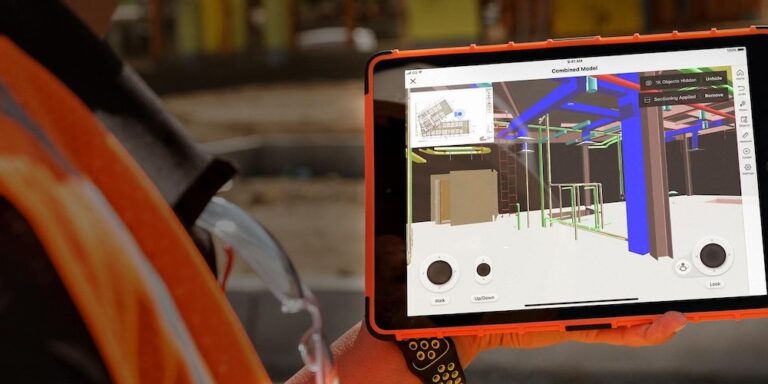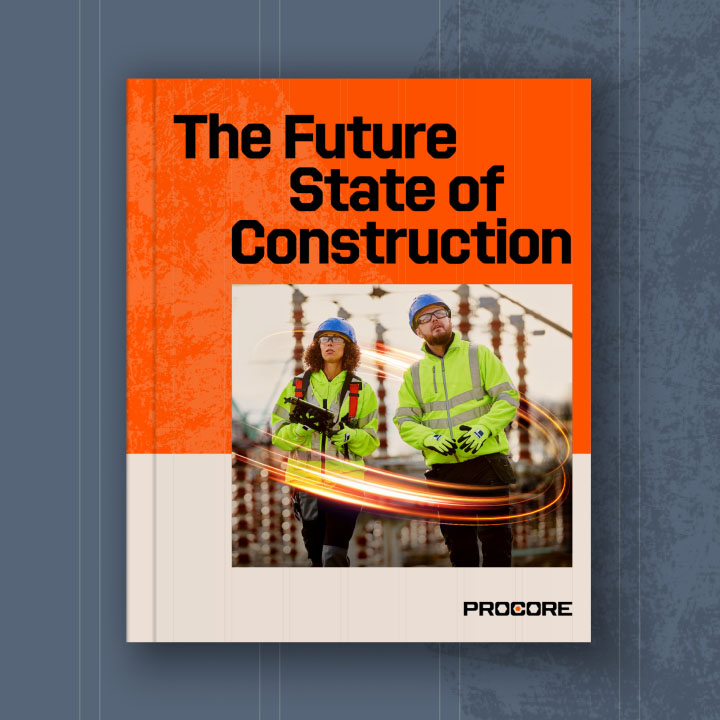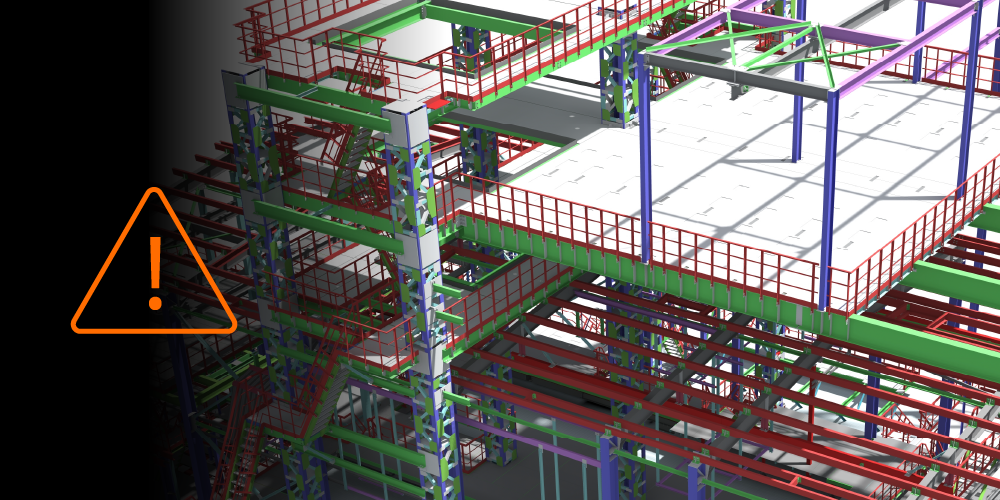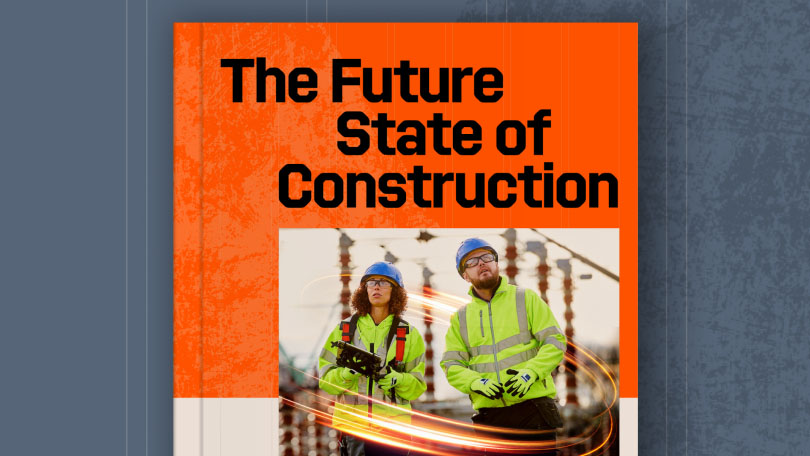Related Articles
— 11 min read
Nailing The Detail-Best Practice in Construction Drawings

Last Updated Aug 28, 2025

Nick Zajac
Principal Strategic Product Consultant
Nick is a Strategic Product Consultant at Procore, he leverages his industry experience to guide clients in optimising Procore, for streamlined project management and enhanced productivity. He has a background in construction and property development, predominately as a Project Manager. Nick has successfully overseen numerous projects within different sectors including high-density residential, mixed-use, commercial and healthcare, demonstrating keen attention to detail and project efficiency.
Last Updated Aug 28, 2025

While the process of designing a building or planning a public realm begins in the minds of the architect, urban planner or landscape designer, the physical act of translating vision into detailed drawings remains the foundation for any project.
Table of contents
Construction Drawings -The Foundation For Every Project
Construction drawings are the key piece of information that facilitates and informs each stage of a project, from early design and financing, through approvals and tendering, to the final delivery of the actual built asset and handover.
However, one of the quality issues that has plagued the construction industry is inadequate documentation. As an investigation by the Architects Registration Board of Victoria showed, this can have multiple flow-on effects, from increasing rework, waste of materials and cost or time blowouts, through to non-compliance, major defects and reputational risks.
This means that understanding what is required for best practice construction drawings and project documentation is more important than ever.
This has been recognised by some of the recent regulatory changes such as the introduction of the NSW Design and Building Practitioners legislation and the new requirements set by the NSW Building Commission. Each identified practitioner, such as the project architect, head contractor, engineers, waterproofer, plumber, electrical and civil contractor, now needs to lodge final construction drawings digitally through a portal and have them signed off by the regulator. Any changes or variations also need to be promptly documented and digitally lodged.
Types of Drawings Used in Construction
Below is an overview of the key drawings used at various stages, explaining their purpose and how they contribute to both planning approvals and project development.
Stage One - From Concept to Development Approval
In any construction project, conceptual and planning drawings serve as crucial communication tools that translate concepts into detailed visualisations. These drawings are essential for both securing development approvals and engaging in meaningful client discussions. They provide an overview of the design intent while aligning with local regulations, ensuring that projects meet planning codes and environmental standards.
Just as the detail of a design evolves through the project lifecycle, so too the sets of drawings for delivering the project evolve in terms of level of detail, specific inclusions and which parties within the delivery team have input into the drawings, At the final stage, all the specific subtrades will have their own set of drawings specific to their discipline and deliverables.

Nick Zajac
Principal Strategic Product Consultant
Procore
Architectural Drawings
The architectural drawings are used for initial discussions with the client and for preliminary development and planning approval purposes. These are zoomed out and in a 1:50 aspect ratio.
They will include details such as:
- Street frontages,
- Heights,
- Compass orientation.
They may also include details such as direction of sunlight in winter and summer so the consent authorities can assess compliance with basic planning code requirements such as passive solar benefits in winter for living areas and minimising heat gain in summer.
Plan View Drawings
This is an ‘eagle’s eye’ view of the development, and will show road frontages, site area allocations between built form, hard stand and landscaping. Other key elements that these construction drawings may include are:
- Pathways of travel for pedestrians and vehicles,
- Any existing vegetation that will be retained such as significant trees.
The plan view or aerial view drawing also often shows the building in context on the site and sketches elements of immediate surrounds including neighbouring buildings so the potential for overlooking or overshadowing can be understood.
Elevation Drawing
The elevation drawings show the profile of the building, with a separate drawing for each façade. In the preliminary drawings placement of windows, any balconies or terraces, external doors, roofline, façade greening and an indicative materiality will be included.
As the project moves closer to tendering and construction, the elevation drawings will be more fully detailed to include information on exterior finishes, precise window layouts, fixing schedules, any vents or pipework and placement of any air conditioning or electrical/lighting elements.
Floor Plans
This floor-by floor set of drawings shows the layout of each floor including key details such as:
- The placement of bathrooms,
- Pathways of egress,
- Emergency exits,
- Fire stairs,
- Voids,
- Vertical transportation,
- Doors,
- Windows,
- Storage areas.
These floor plan drawings also show the allocation of space to different activities. For example, in a multi-residential project it will show kitchen areas, living areas, bedrooms, ensuites, pantries, walk-in robes and so forth. In a commercial or retail building it will include amenities, conference rooms, breakout areas, specific types of tenant areas and circulation zones.
As the project moves into detailed design the drawings will also incorporate finishes plans including flooring, wall finishes, types of windows and doors, ceiling finishes and lighting placement.
Nick Zajac
Principal Strategic Product Consultant
Procore
Pro Tip
These detailed drawings will need to be based on both the architectural intent and the requirements of relevant codes and standards including the National Construction Code provisions. Any provisions stipulated by the consent authority in relation to local planning requirements or guidelines, such as the Victorian government apartment guidelines, also need to be considered.
Stage Two - Detailing Drawings for Project Delivery
Once the project is approved for construction and moves into preparation for delivery, the architect or building designer, in collaboration with the head contractor and key consultants and trades, will prepare the detailed drawings.
These are in a 1:20 aspect ratio, so the necessary level of precise detail can be included. They focus on a small portion of a specific element of the final building such as the roof plant area, an external wall section, an individual apartment, or the amenities area on an office floor.
They give the relevant trades and consultants a clear picture of how the elements will be assembled, including connections between materials or fixtures, specific tolerances and dimensions. This is essential information and detail for project deliverables that are higher risk in terms of defects such as how fenestration assemblies are to be located in the façade system, or directives for waterproofing applications.
Section Drawings
Drawings of sections are like a slice through the building, and will show important details such as the thickness of walls, and components of the wall systems, and any penetrations for windows, doors, ductwork or services.
Structural Drawings
Structural drawings are a specific part of the detail design drawings that have a critical requirement around accuracy and completeness as they provide the schematic for how the building is designed to maintain structural integrity.
They will incorporate:
- Detail of the foundations and slab,
- Beams and column,s
- Structural walls,
- Lift cores,
- Floor slabs or flooring cassettes.
All of this detail will be mapped in consultation with structural engineers to ensure the final drawings result in a building that meets all relevant standards for robustness, safety and buildability.
Building Services Drawings
Created by the consulting engineers, the building services drawings will include the heating, ventilation and air conditioning (HVAC) solution with details of individual system elements such as:
- Ductwork,
- Air handling units,
- Boilers or heat pumps,
- Ventilation outlets,
- Location of any required structural penetrations.
Because HVAC also has interactions with electrical, hydraulic, fire and the project energy modelling and thermal performance, coordination between disciplines on the detail drawings is essential.
Electrical and plumbing/hydraulics drawings will require a similar level of detail to the mechanical services set, and again, ensure the final detail meets relevant standards including AS/NZ and ISO standards specific to both electrical and all matters relating to plumbing.
Fire Safety Drawings
Fire services drawings comprise two forms of schematic, the dry fire solution and the wet fire solution.
Dry Fire Design
This incorporates elements such as pathways of egress, emergency exits, alarm systems, modelling of smoke movement, smoke or fire curtain location, separation of compartments, and the location of smoke detection devices. The design will include detailed specifications that align with the fire safety requirements of the NCC.
Wet Fire Design
These include details such as sprinklers, fire pumps, fire water storage, hoses and points of access for emergency services. Again, the NCC requirements will be considered for a final, compliant detailed design.
Land Use, Landscaping and Civil Drawings
Civil drawings and landscape drawings will include information such as:
- Drainage lines,
- Flood risk areas,
- Detention basins
- Trenching.
In addition, hard landscaping such as paths and hardstand, seating, water features and raised planters will be on the landscaping drawings, and soft landscaping drawings and features will include relative heights and vegetation types for plantings, deep soil areas and watering points or irrigation systems.
Head Contractor Drawings
The head contractor drawings will include details necessary for managing the construction process, including the location of cranes and builders’ lifts, laydown and materials storage areas, access ways through the site, vehicle entry and exist, location of site sheds and amenities and information about temporary water and power supplies, site fencing and security.
As-Built Drawings
These final drawings, the ‘As-Built’ drawings are critical as they form the final documentation handed over to the client, the building owners and the building managers. They should include all the information on materials and equipment that is needed for future repairs and maintenance, and also form the basis of claims during the defects liability period
Nick Zajac
Principal Strategic Product Consultant
Procore
As-built drawings are the final drawings in a project, they include all the changes made throughout the construction process and can help compare what was designed, to what was built. They provide an accurate of what was produced in the final construction of a project.
See what’s coming in construction over the next decade.
Download the Future State of Construction Report for insights, trends, and innovations shaping the industry over the next 8–10 years.

Technology as a Driver of Accuracy and Quality
With reputations, finance and safety of occupants all riding on the final result, accuracy in drawings is absolutely critical. This includes both accuracy within a specific set of drawings and accuracy in terms of which set of drawings a trade or consultant has used to inform their work on the final project. Technology improves how drawing documentation is managed, enhancing accuracy, quality, and reducing risks.
Ensuring Accuracy with Up-to-Date Drawings
With construction drawings evolving over the project lifecycle, ensuring the latest versions are in use is fundamental to project success. Digital tools, like project management platforms streamline the distribution of drawings. When updates are made, the latest drawings are instantly available to stakeholders, with push notifications alerting affected teams to changes. This reduces the chance of errors caused by outdated information.
For example, a Design Manager may oversee drawing distribution, ensuring that trades such as plumbers or electricians have the correct versions. Although contractors often print drawings for on-site use, these printed copies must reflect the most recent updates from the digital master set to prevent miscommunication and rework.
The multiple sets of drawings also change over time, so ensuring the latest set of drawings is being used is absolutely fundamental.
Enhancing Coordination Across Teams
Digital drawings enable real-time collaboration across disciplines. BIM or AutoCAD allow architects, engineers, and contractors to see how their work fits together. When one team makes a change—such as adjusting structural elements—and those updates are reflected across the model, reducing the risk of clashes between systems like electrical conduits and HVAC ducts. This precision improves project efficiency and ensures that each team works from a single source of truth, reducing delays and miscommunication. This also delivers dividends in terms of reducing some of the common risks associated with incomplete, outdated or inaccurate drawings, including early clash detection, precision of tolerances and reductions in rework or non-compliance.
Standardising On-Site Work with Digital Access
Technology ensures that even on-site teams stay aligned. Digital drawings, accessible via tablets or smartphones, reduce reliance on paper copies, ensuring that contractors always have the latest information. Project managers can remotely update and annotate drawings, which site workers can mark up with as-built conditions or additional notes. This real-time feedback loop ensures accurate installations and minimises errors.
On some projects, the head contractor maintains printed copies of the latest drawings in the site office for quick reference. Any changes marked on these printed sets are transferred back to the digital platform, ensuring all stakeholders are kept up to date.
As the delivery team works on its specific package of the works, the drawings will continue to evolve with variations, additional details and verification of completion signed off by a building surveyors or other oversight authority.
Nick Zajac
Principal Strategic Product Consultant
Procore
Mitigating Risks with Better Documentation Management
Accurate, up-to-date documentation is important in reducing legal and contractual risks. Cloud-based platforms provide a centralised repository for all project drawings, tracking when each version is accessed or modified. This ensures transparency and accountability, supporting dispute resolution if necessary.
Construction drawings translate design intent into reality, ensuring precision, coordination, and compliance at every stage of a project.
Construction drawings help deliver successful projects, serving as both a communication tool and a detailed guide for all stakeholders. With the integration of technology, managing these documents becomes more efficient, reducing the risks associated with outdated information, miscommunication, and rework. Digital tools such as BIM and cloud platforms ensure that every team works from the latest plans, improving accuracy, coordination, and compliance.
Categories:
Written by

Nick Zajac
Principal Strategic Product Consultant | Procore
Nick is a Strategic Product Consultant at Procore, he leverages his industry experience to guide clients in optimising Procore, for streamlined project management and enhanced productivity. He has a background in construction and property development, predominately as a Project Manager. Nick has successfully overseen numerous projects within different sectors including high-density residential, mixed-use, commercial and healthcare, demonstrating keen attention to detail and project efficiency.
View profileExplore more helpful resources

Managing Direct Costs in Construction: How Visibility Drives Profitability
Direct costs define the financial reality of every construction project. They cover the labour, materials, and equipment that drive delivery and determine profitability. But even the best-planned budgets can shift...

BIM Clash Detection: Reducing Rework, Delays, and Risk in Construction
Design clashes can be a significant hidden cost in construction, as each conflict between systems risks expensive rework, project delays, and reduced margins. BIM clash detection empowers teams to identify...

Next-Gen Job-Costing: Ready to Move? 5 Things to Consider Before You Get Started
In this three-part series, Quantity Surveyor turned Financial Solutions Specialist Clint Burgess uncovers the real-world gains for people, processes, and profits when businesses move from legacy to next-generation Enterprise Resource...

From Workarounds to Workflow: Solving Construction’s Legacy Job-Costing System Challenges with Next-Gen Tools
In this three-part series, Quantity Surveyor turned Financial Solutions Specialist Clint Burgess uncovers the real-world gains for people, processes, and profits when businesses move from legacy to next-generation Enterprise Resource...
